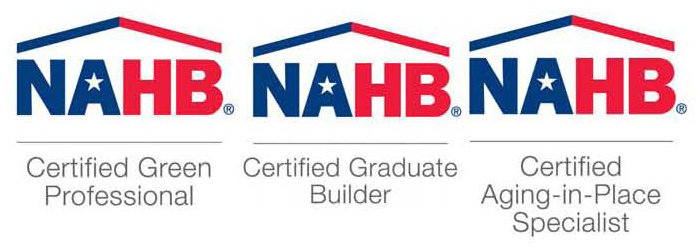Door Tips
Doors:
Your home’s exterior doors can contribute significantly to air leakage, and can also waste energy through conduction, especially if it's old, uninsulated, improperly installed, and/or improperly air sealed. Weatherstripping can reduce the energy losses due to air leakage.
Selecting New Exterior Doors
New exterior doors often fit and insulate better than older types. If you have older doors in your home, replacing them might be a good investment, resulting in lower heating and cooling costs. If you're building a new home, you should consider buying the most energy-efficient doors possible.
When selecting doors for energy efficiency, it's important to first consider their energy performance ratings in relation to the local climate and your home's design. This will help narrow your selection.
Types of Doors
One common type of exterior door has a steel skin with a polyurethane foam insulation core. It usually includes a magnetic strip (similar to a refrigerator door magnetic seal) as weatherstripping. If installed correctly and not bent, this type of door needs no further weatherstripping.
The R-values of most steel and fiberglass-clad entry doors range from R-5 to R-6, not including the effects of a window. For example, a 1-1/2 inch (3.81 cm) thick door without a window offers more than five times the insulating value of a solid wood door of the same size.
Glass or "patio" doors, especially sliding glass doors, lose much more heat than other types of doors because glass is a very poor insulator. Most modern glass doors with metal frames have a thermal break, which is a plastic insulator between inner and outer parts of the frame. Models with several layers of glass, low-emissivity coatings, and/or low-conductivity gases between the glass panes are a good investment, especially in extreme climates. When buying or replacing patio doors, keep in mind that swinging doors offer a much tighter seal than sliding types.
It's impossible to stop all the air leakage around the weatherstripping on a sliding glass door and still be able to use the door. In addition, after years of use the weatherstripping wears down, so air leakage increases as the door ages. If the manufacturer has made it possible to do so, you can replace worn weatherstripping on sliding glass doors.
Installation
When you buy a door, it will probably be pre-hung. Pre-hung doors usually come with wood or steel frames. You will need to remove an existing doorframe from the rough opening before you install a pre-hung door. The doorframe must be as square as possible, so that the door seals tightly to the jamb and swings properly.
Before adding the interior trim, apply expanding foam caulking to seal the new doorframe to the rough opening and threshold. This will help prevent air from getting around the door seals and into the house. Apply carefully, especially if the frame is wood, to avoid having the foam force the frame out of square.
If needed, you'll also want to add weatherstripping. Check the weatherstripping on your exterior doors annually to see if it needs replacement.
Storm Doors
Adding a storm door can be a good investment if your existing door is old but still in good condition. However, adding a storm door to a newer, insulated door is not generally worth the expense, because you won't save much more energy.
Storm door frames are usually made of aluminum, steel, fiberglass, or wood (painted or not). Wooden storm doors require more maintenance than the other types. Metal-framed storm doors might have foam insulation inside their frames.
High-quality storm doors use low-emissivity (low-e) glass or glazing. Some doors have self-storing pockets for the glass in summer and an insect screen in winter. Some have fixed, full length screens and glass panels that slide out of the way for ventilation. Others are half screen and half glass, which slide past each other. Some are removable for cleaning, but others are not. All of these features add convenience and cost.
Never add a glass storm door if the exterior door gets more than a few hours of direct sun each day. The glass will trap heat against the entry door and could damage it.
Storm doors for patio doors are hard to find, but they are available. Adding one to a new, multi-glazed low-e door is seldom economic. Insulated drapes, when closed for the night in winter or on sunny days in summer, are also a good idea.
Skip Howes
CGP - Certified Green Professional
CGB - Certified Graduate Builder
CAPS - Certified Aging in Place Specialist
RRP - Certified Lead Paint Renovator
Scott Homes, Ltd., Designers & Builders
President


Schedule An Inspection
By Phone or Email we can schedule the services you desire to begin saving money on your utility bills!
Contact Us Online
Email us at info@ColoradoEnergyAnalysts.com
© Copyright 2013-2024 - Colorado Buys Local Inc | Designed for Colorado Energy Analysts
